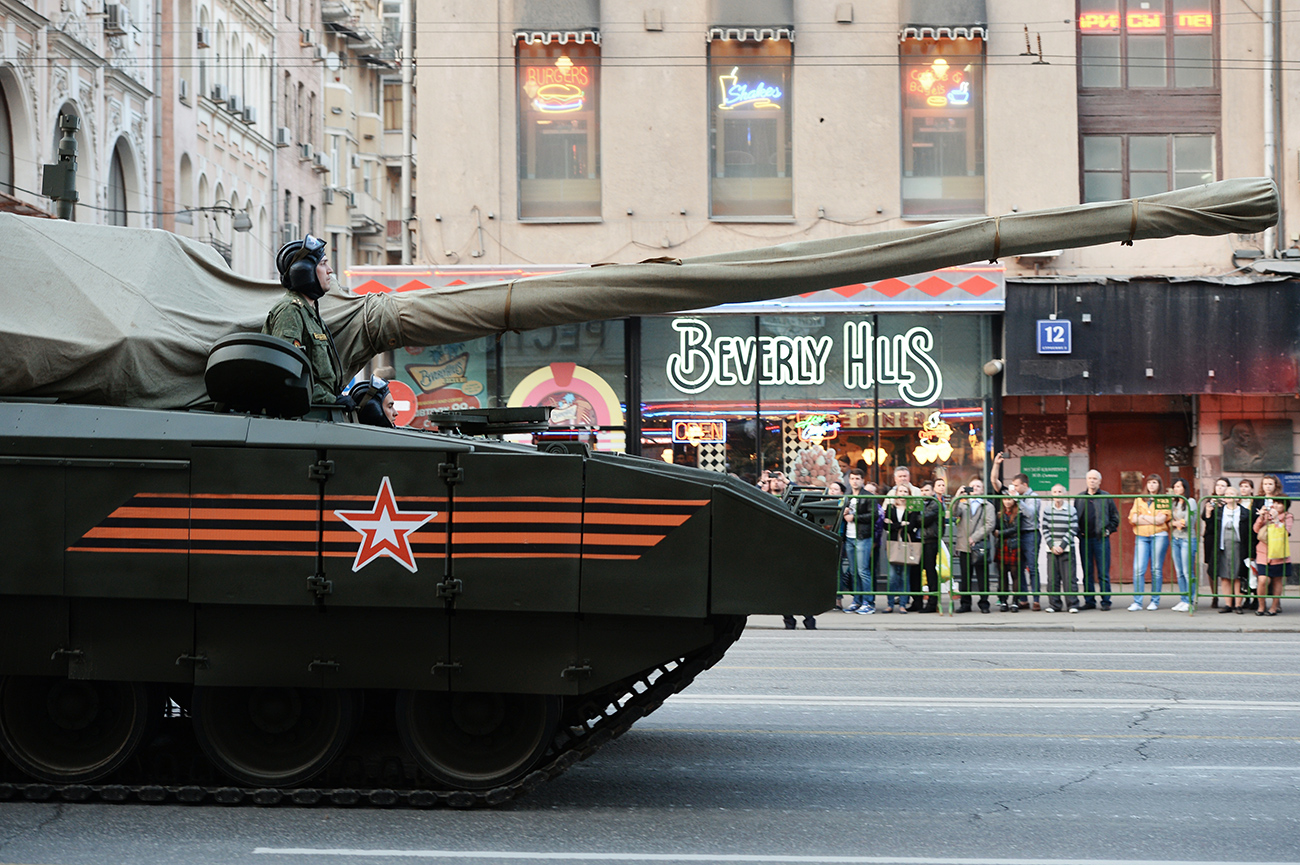
Experts scoff at the idea of Armata tanks being equipped with nuclear shells.
Maksim Blinov/RIA NovostiOne of the main reasons why Russia will not make nuclear shells to fit its newest T-14 Armata tank is the short range of the tank’s gun.
“The tank's gun has a maximum range of 4 km. To use a nuclear weapon at that range is a complete suicide,” head of the NTV channel’s military show, Sergey Kuznetsov, told RBTH.
Dmitry Litovkin, military analyst of the Izvestia daily, agrees with Kuznetsov.
“Imagine what would happen on the battlefield, if tanks start shooting nuclear shells within a kilometer from people and from themselves, and when the wind will carry radioactive clouds for miles around,” he asks.
According to Kuznetsov, it would be easier to obtain maximum projectile penetrating power for tank guns by creating a shell with depleted uranium instead of using nuclear shells.
The T-14 Armata tank was first presented to the public at the Victory Day Parade in Moscow in 2015. Among the main features of the tank is an unmanned turret.
In addition, other types of military machines can be built on the same platform. This approach is now widely used in the auto industry.
The Armata platform can be used for infantry fighting vehicles, self-propelled artillery, repair and recovery vehicles and fire support combat vehicles.
Developing nuclear artillery shells, as a part of the country’s tactical nuclear arsenal, began in the Soviet Union in 1950s.
In the 1960s, a wide range of tactical ammunition, including artillery shells for 152 mm to 406 mm caliber guns, was adopted by the Soviet Army.
“In Soviet times there were even nuclear landmines,” Litovkin says. “Therefore, nuclear aerial bombs, artillery and tank shells were really stockpiled in large numbers. But the application of these kinds of weapons was found to be impractical.”
Out of the artillery guns that are in use in the Russian army now, 2S19 Msta, 2S3 Akatsiya and 2S5 Giatsint-S can theoretically use the 152 mm 3BV3 nuclear shell, but, according to Colonel (retired) Viktor Murakhovski, such shells were designed but never used. Kuznetsov adds that the Russian military will never confirm whether or not the Soviet-made shells are still in use.
“For military purposes, it is expedient to use nuclear warheads on ballistic missiles that fly hundreds of miles, such as the Iskander-M operational-tactical missiles which can hit targets at a distance of 500 km,” adds Litovkin.
 As a part of Operation Upshot-Knothole, the U.S. test fired a 15 kiloton artillery shell from a 280 mm cannon in 1953. Source: Federal government of the United States
As a part of Operation Upshot-Knothole, the U.S. test fired a 15 kiloton artillery shell from a 280 mm cannon in 1953. Source: Federal government of the United States
The Russian media picked up the news from The Diplomat, which citing unconfirmed media reports, wrote that Russia’s Uralvagonzavod “will not only upgrade later versions of the mysterious T-14 with a new 2A83 152 mm gun but also develop a nuclear tank shell for tactical use on the battlefield.”
Experts told RBTH that the report could be classified as “fake news.”
A brief investigation helped RBTH trace the source of the information to an article on the Defense One website in, where Capacity Institute head Phillip Karber says that Russians may be planning to equip the T-14 Armata tank with nuclear weapons.
“They’ve announced that the follow-on tank to the Armata will have a 152 mm gun missile launcher. They’re talking about it having a nuclear capability. And you go, ‘You’re talking about building a nuclear tank, a tank that fires a nuke?’ Well, that’s the implication,” Karber told Defense One.
If using any of Russia Beyond's content, partly or in full, always provide an active hyperlink to the original material.
Subscribe
to our newsletter!
Get the week's best stories straight to your inbox